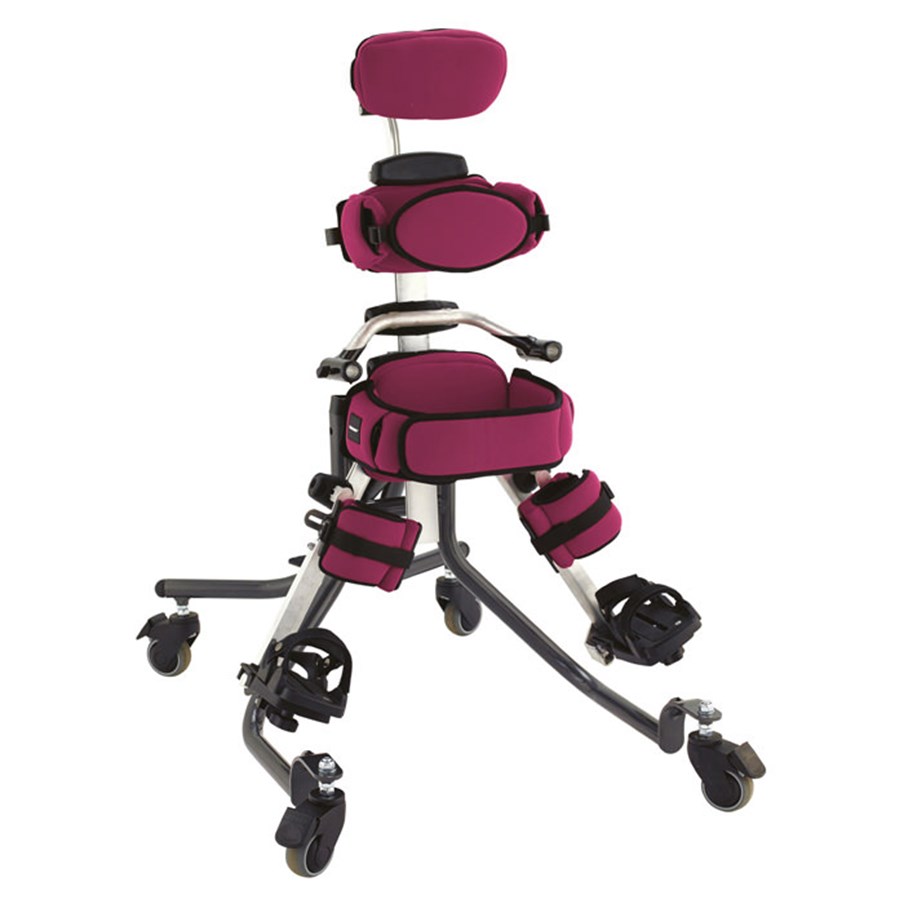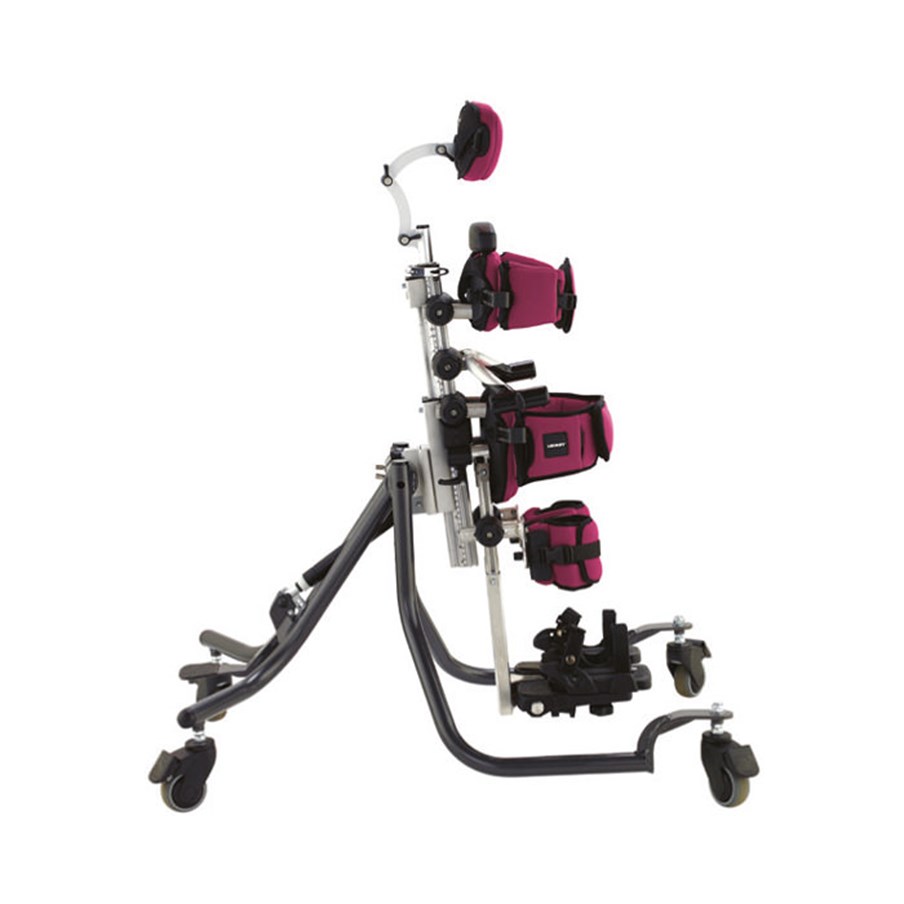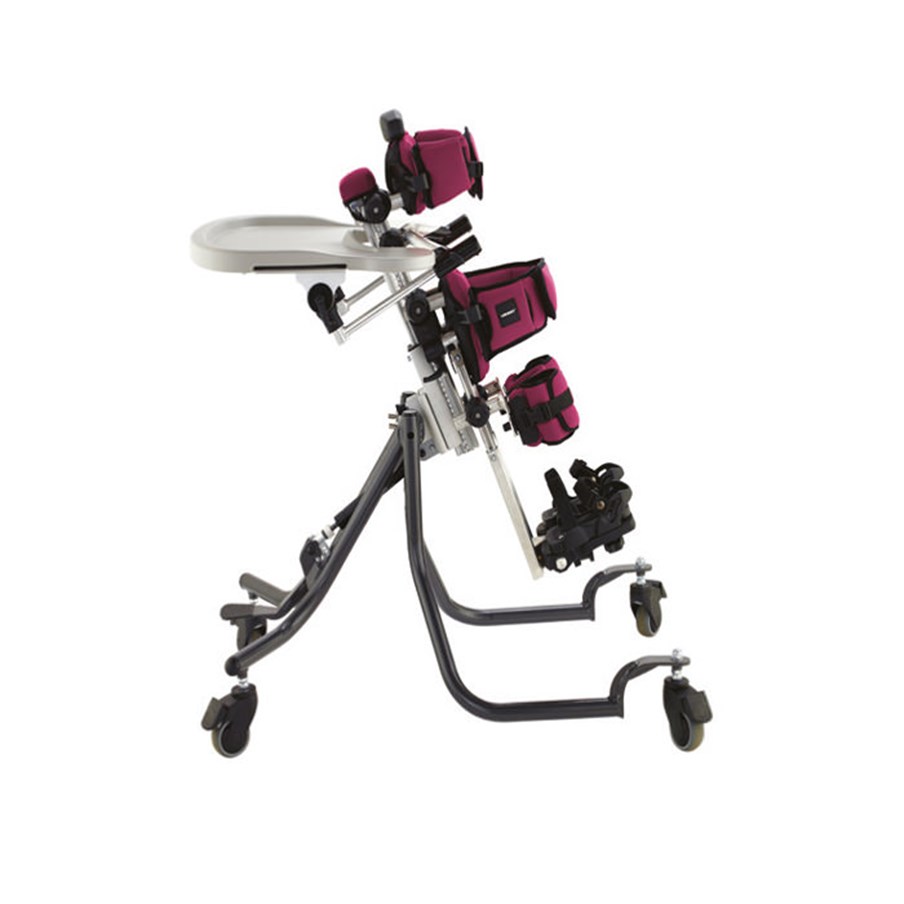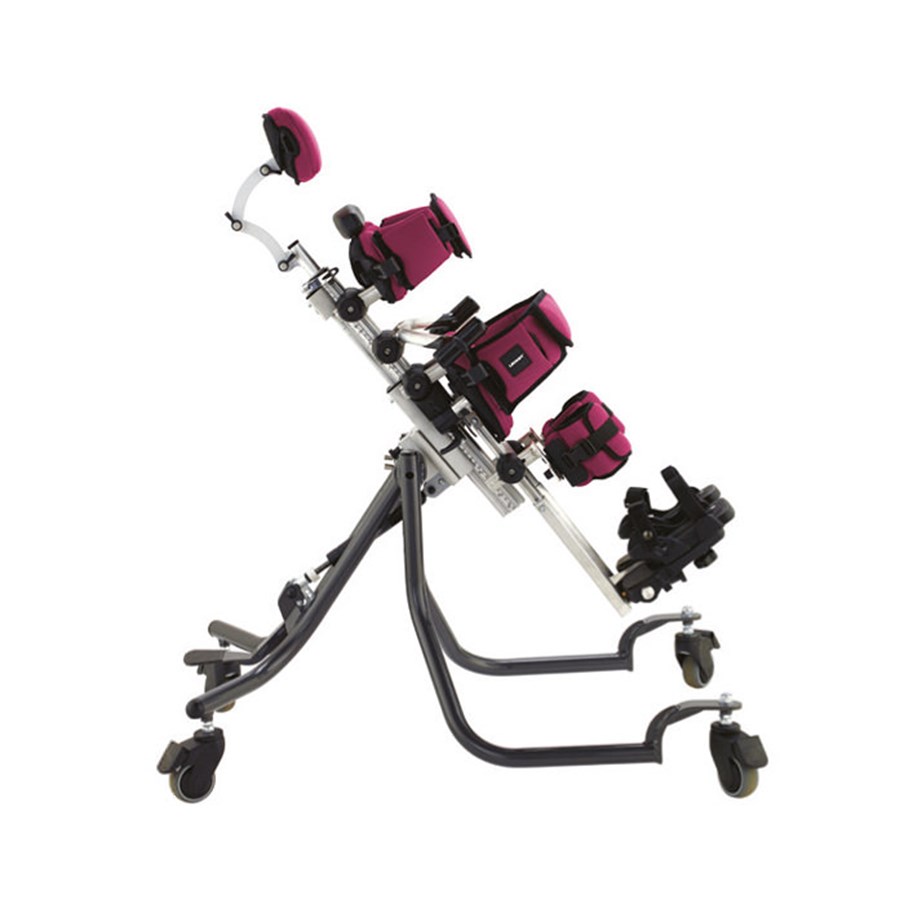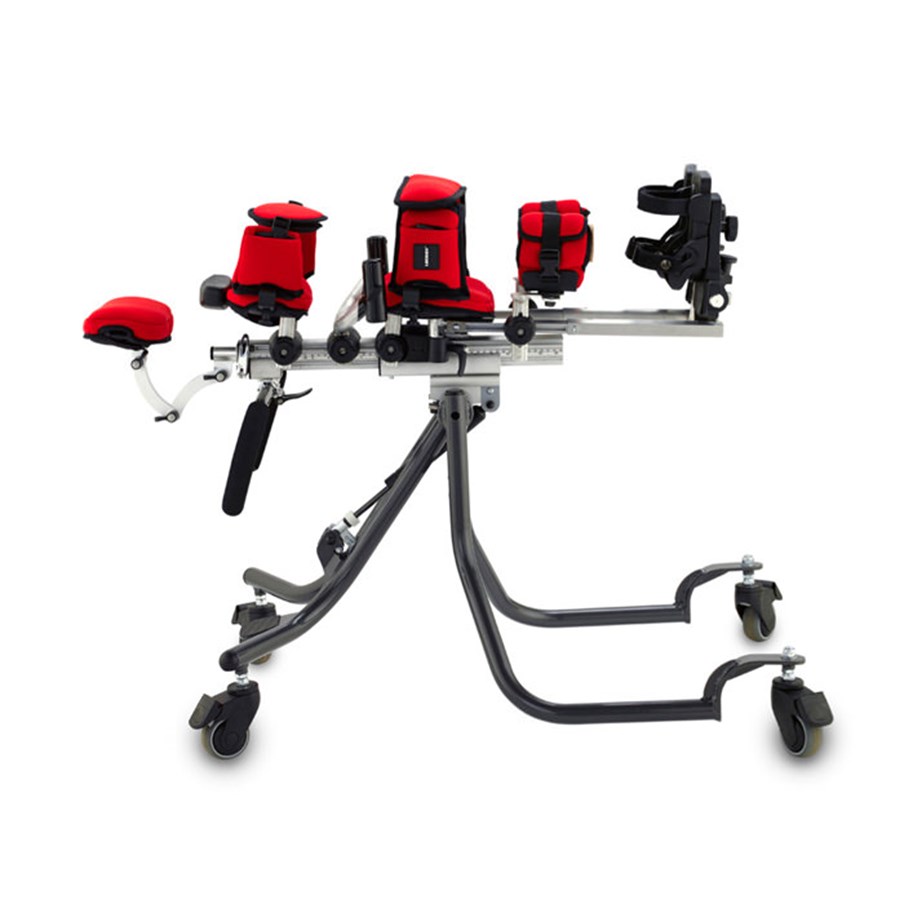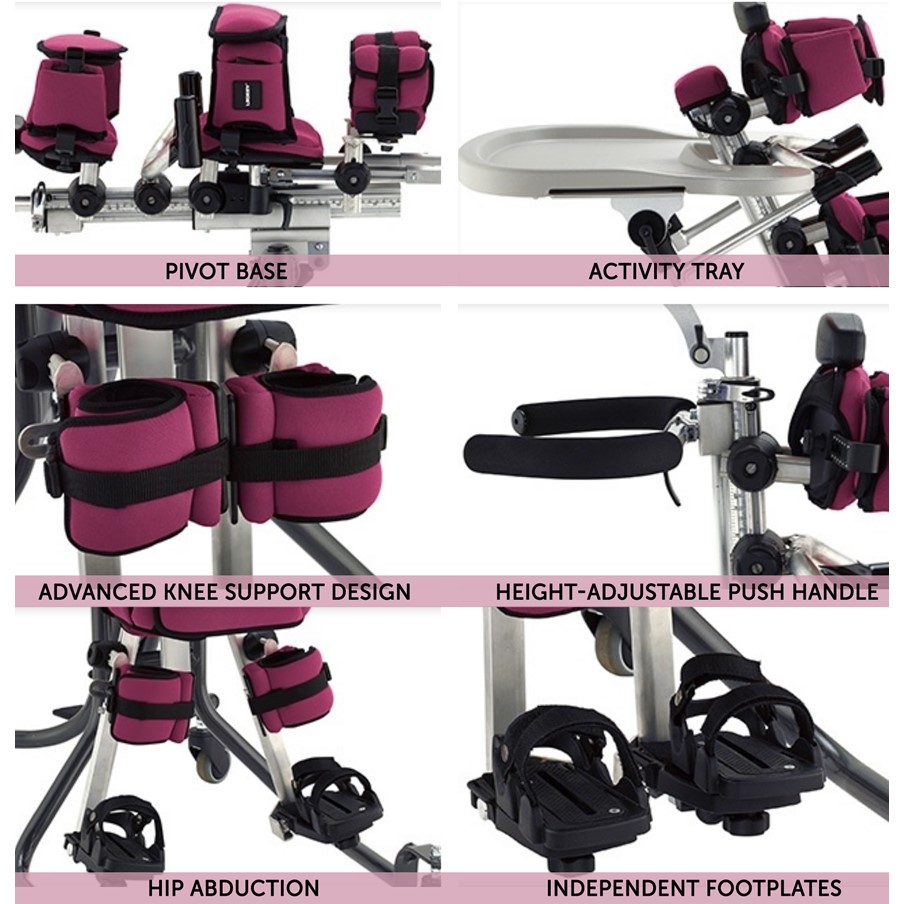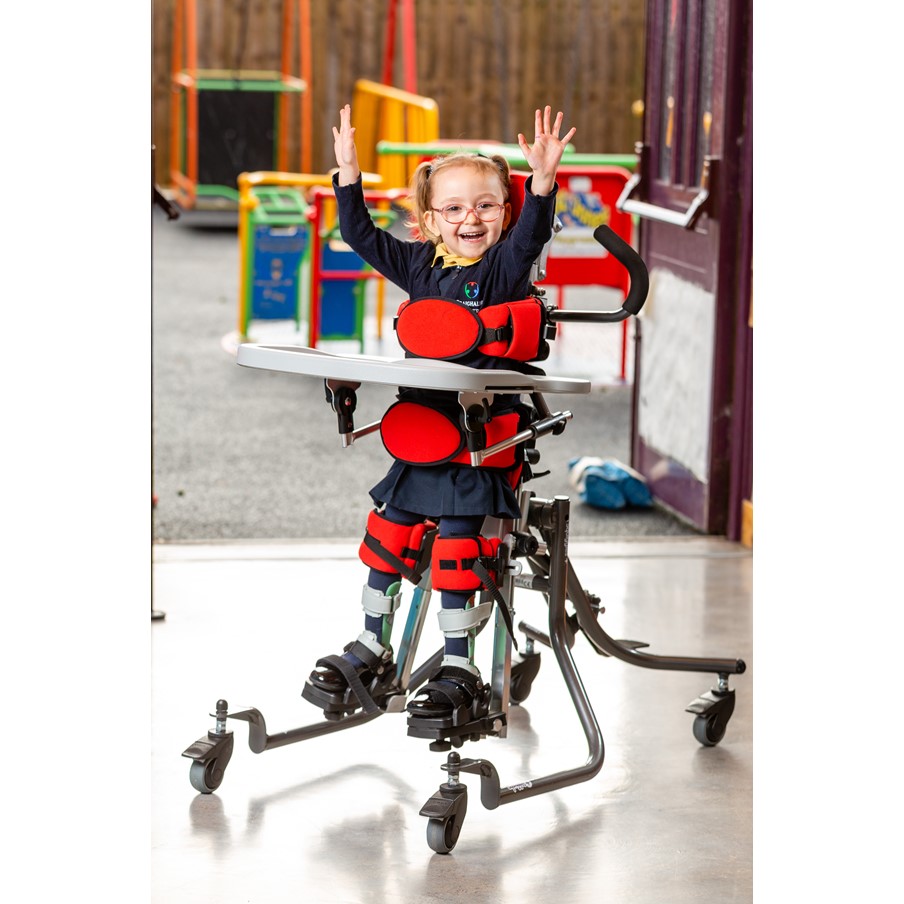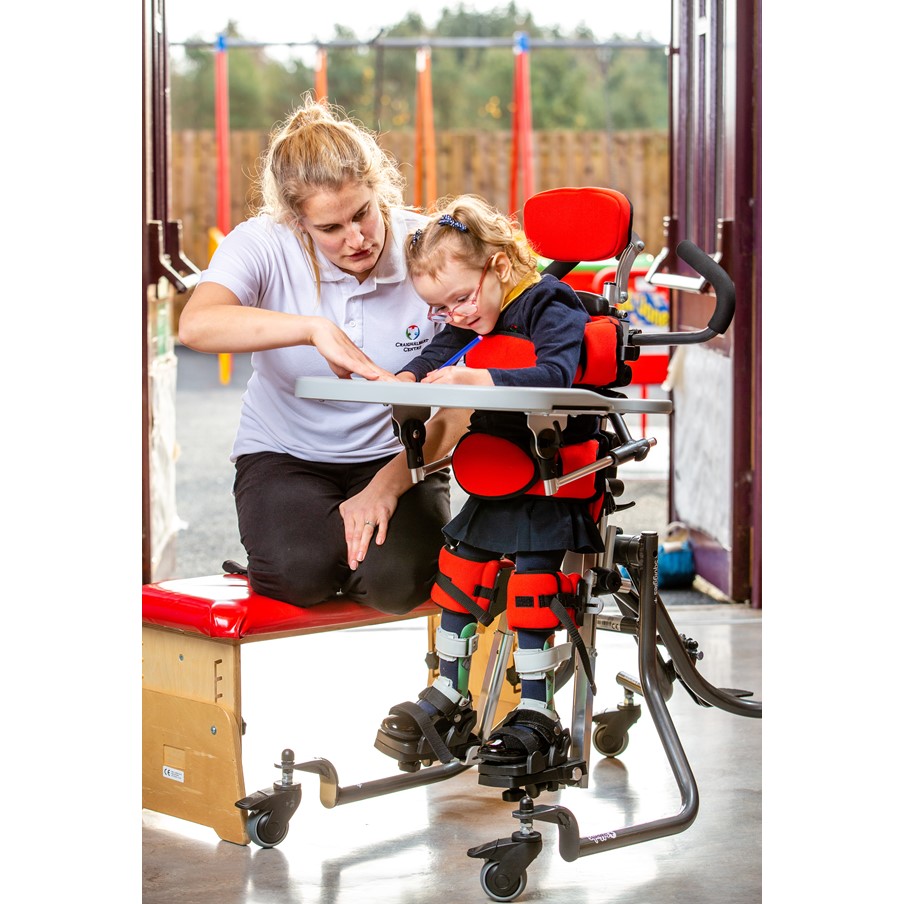Leckey Squiggles+ Standing Frame
An extremely versatile three-in-one stander for children aged 1-5 years. By standing in the Squiggles+, children bear their weight through their bones and joints, which helps shape them while increasing their strength. Evidence would suggest that standing has a beneficial effect on hip joint formation. Standing stretches tight muscles and provides an alternative position. Socially, standing is also important as it enables interaction with their peers at the same level.
This product is not available in your selected combination
Product Code: {{stockCode}}
Please note the selected product option is not available for trial.
3-in-1 Design
The Squiggles+ Stander is an extremely versatile 3-in-1 stander, offering prone, upright and supine standing in one product. Prone position provides anterior support and stability while encouraging weight-bearing and use of upper extremities. The upright position is designed for users with good balance and trunk control but cannot stand independently. Supine position supports the back of the body while offering lateral and anterior supports to maintain alignment.
Hip Abduction
Hip Abduction now achievable, 60 degrees bilaterally. With a measurement gauge to monitor and aid repeatability. Hip laterals also shift in sync with the legs as they move through the arc of abduction.
Advanced Knee Support Design
Larger, more comfortable medial knee supports to distribute pressure, especially in abducted standing. Advanced wrap support to maintain knee in neutral flexion or extension.
Independent Footplates
Individually adjustable footplates allow you to set each footplate to different heights. This accommodates leg length discrepancies while providing support to both legs.
Improved Pivot Base
Improved pivot base accommodates hip abduction and facilitates horizontal loading from 90 to 160 degrees. The new foot pedal eases caregiver effort while providing a more stable platform to transfer the child onto.
Activity Tray
Activity tray with improved height and adjustability accommodates the smallest users. Whether prone or supine, the tray with optional grab rail can be used to facilitate table top activities while in the standing position.
Height-Adjustable Push Handle
New height-adjustable push handle helps make positioning the child during standing therapy, easier. The height-adjustable push handle can be folded for ergonomic use and lowered for prone use.
Additional Specs
| Hip Support (height from footplate to mid buttocks) | 300mm - 530mm |
| Distance Between Midline of Knees | 140mm - 215mm |
Please note: Trial units available in purple only. Blue, Red and Red Vinyl are indent only.
Contact your Business Territory Manager or email helpis@alliedmedical.co.nz for more information or to book in a demonstration.
Squiggles Plus includes:
- Footplates
- Pivot Base
- Tray attachment
- Knee supports with cover
- Chest & hip lateral supports
- Standard model with support shell
- Hip & chest support with sternum prompt
Stander Covers include:
- Support harnesses (2)
- Chest cushion (1)
- Hip cushion (1)
- Chest lateral cushions (pair)
- Knee supports (pair)
- Pelvic support harness (1)
- Spine cap cover (1)
| Approx Age Range | 1-5 |
| User Weight Limit | 22kg |
| User Height | 730mm - 1110mm |
| Chest Support | Angle adjustment +/-30°, Depth adjustment 50mm |
| Chest Plate Height Range | 460mm - 820mm (footplate to armpit) |
| Width Between Chest Laterals | 160mm - 230mm |
| Tray Height | Prone (footplate to top of tray) - 555mm - 800mm / Supine (footplate to top of tray) - 480mm - 800mm |
| Tray Angle Adjustment | Prone 30° / Supine 40° |
| Warranty | 3 years |
What needs to be considered when selecting a standing frame for a child?
Standing frames are designed for children who are spending most of their days in a wheelchair or buggie and assist in fulfilling their mobility and standing needs. Your child’s therapist will work with you to determine what your child needs and what the goals will be for them when using a standing frame.
Some things that you might like to consider are:
- How easy is it for my child to transfer into it?
- What position will work best for them – to be on their front (prone), on their back (supine), upright or a combination of these?
- Can the angle easily be adjusted when they are in it?
- How much growth is there for them?
- Is it able to be transported so we can bring it home from school in the weekends and/or holidays?
There are several main types of Standers:
- Dynamic/Multi-position – enables children with conditions such as cerebral palsy and muscular dystrophy, who are unable to stand and walk independently, to come into a safely supported upright position. They are able to switch from supine to prone or upright standing very quickly – without using any tools. They allow the child to be at eye level with their peers, helping to facilitate social interactions.
- Prone Standers – these are mobile standers (generally with four castors) that support the child at the front and offer a continuous range of angles so that the best position for the child can be achieved. They encourage weight-bearing and assist children in gaining the ability to stand.
- Supine Standers – also mobile, these standers work well for children who don’t have the strength or ability to lift or control their head and shoulders. This style allows for partial weight bearing and helps the child develop better control of their head, trunk, pelvis, knees and feet. It also leaves the child’s hands free to access items on a tray or table in front of them.
- Vertical standers – like the name indicates, holds the child upright. It is suited to children who are not confident on their feet or are developing lateral weight shifting skills. These work well to develop trunk strength and also promote independent, upright standing.
Why is standing important?
There are lots of ways that children with disabilities benefit from standing including the following:
- increases bone density and reduces the risk of fractures
- stretches muscles, preventing the onset of contractures
- improves respiration and voice control
- enhances circulation and blood pressure
- aids digestion, bowel function and bladder drainage
- facilitates the formation of the hip joint in early development
- improves skin integrity by relieving pressure encountered during sitting
- improves wellbeing, alertness and sleep patterns
My child needs more support when toileting - what are the options?
Essentially there are two different types of toileting options for children with disabilities – either stand alone commode style toileting systems or ones that can be attached to a regular toilet.
The commode style is generally easy to move and can be easier for children to transfer on and off. Many of these can also be used as a shower chair and are really easy for carers to use. They can be placed over the toilet or a removable commode bucket can be used.
Toilet support systems attach easily to a regular toilet. They are adjustable, secure and provide good positioning while the child is using the toilet. They help encourage independence and as many have padded seat options, ensure that the child is comfortable especially if it takes longer than usual.
Can we trial the wheelchairs shown on this website?
Yes - all that is needed is a trial request to come through from a therapist to start the process. Once the trial request has been received, with the specifications required, we will send the wheelchair out to the therapist ready to trial for at least one week.
Can we trial other pieces of equipment shown on this website?
Yes - all we need is a trial request to come through from a therapist that you are working with. Once we have this and the specifications you require, we will send the equipment out to the therapist and they will have it for you to trial for at least one week.
Any of the Toileting or Bathing items are issued for trial on the basis of "Dry Trial". This means that the item can be set up on the toilet or in the bath but not actually used with water. Many people use our trial equipment and we need to ensure that it stays in a clean and safe condition.
There are lots of wheelchair and buggie options – where do I start?
Good question – and one that we know your child’s therapist will help you with. However, we know that lots of parents and carers like to do their homework, so here are a few things to consider when looking at mobility options for your child:
How much support do they offer? Seating supports are often incorporated into buggies and wheelchairs to ensure that kids have good postural support and are also really comfortable.
Rear facing or front facing? Like regular buggies, it is good to have the option for your child to be facing you, which allows you to keep a close eye on them.
What is the overall size? The actually width of the buggie or wheelchair is important as you want it to easily fit through doors and let you go to the places that are part of your life.
How much do they weigh? Depending on the age of your child, it is likely that you will be transferring them into a car seat when you go out and will need to lift it into your vehicle. Looking after your body is really important too.
How easily do they fold up? How small do they go? Think about the space you have in your vehicle and also that you made need to do this several times a day – and in the pouring rain sometimes too!
Is there a storage compartment? A small thing that makes a big difference – a place to put spare clothes, food and nappies is important. If a storage compartment or bag is not standard, then check to see if there is an easy way for a baby bag to be attached.
What are the options if I need to also transport other children? Some buggies have the option of adding on a buggie board that older children can stand on, while others have the option of having mounting brackets added for a baby capsule. If this is something that you will need, make sure you discuss the options with your therapist.
And of course, kids grow so you need to consider one that has a good amount of growth incorporated in it – it’s better to start with one that is a little on the large side, than one that is a little snug. It’s quite the process to get equipment funded so you ideally want it to last as long as possible.
Once we decide upon the wheelchair our child is going to use, how long will we need to wait until we receive it?
Once the funding comes through, standard wheelchairs like the Karma Flexx Junior Paediatric wheelchair is generally held in stock and delivery to the therapist will be within 2 - 3 days. If the wheelchair is going to be custom made, it might take up to six weeks from the time we receive the order from the funder until it is delivered to the therapist.
Squiggles+ Knee Cup Measuring Guide
2023 Leckey Product Range Guide
Leckey Squiggles+ / TT Script.pdf
Paediatric Walking and Standing Solutions Chart.pdf
Leckey Sandal Measuring Guide.pdf
Activities at home - Leckey Standing device.pdf
Leckey 24 hour postural management .pdf
Squiggles+ Stander Assessor Set Up Guide.pdf
Leckey Multi Use Product Guide
Leckey Chest Or Hip Wraparound Harness Measuring Guide
